
Under the umbrella of speculative fiction—a genre that leaves realism behind for the fantastical, the supernatural, the futuristic, and more places reached by human imagination—exist the subgenres of fantasy, science fiction, superhero fiction, alternate history, post-apocalyptic future, utopia, and dystopia, to name a few. Here, we will delve into utopian fiction and discuss the subgenre's history and common themes found between the pages of books and on the screen.
In 1518, Sir Thomas More wrote Utopia, describing an imaginary island with a "perfect" political and social system, popularizing the modern definition of utopia as a place of ideal perfection. One would think, etymology-wise, such a place would be the polar opposite of dystopia—dys- or δυσ- being "bad" and -topos or τόπος being "place." Yet, utopia, when broken down does not mean "good place" but "no place/not a place." Utopia is, by definition, a place that does not or cannot exist.
There have been many attempts to establish utopian communities throughout U.S. History. In the 1800s, religious communities dotted the northeast. The strictly purist Rappites created an isolated commune to await the Revelation, though they did not gain much following. The religious Shaker communities were founded on the principles of simplicity, celibacy, and equal labor and had gained 6,000 members by the 1830s—though that is where their numbers peaked, and only two members remain in the U.S., in Maine.
Non-religious attempts at utopia followed them, though none ultimately lasted. Brook Farm was one of the longer-lasting attempts at creating a social utopia. Founded on fellowship and brotherly cooperation, the community of Brook Farm was meant to live in harmony, free of government. It ultimately adopted more rigid rules and mandates which led to many members leaving. The Brook Farm Phalanstery burned to the ground in 1846 and the property was sold, effectively ending that experiment.
So, if utopia often fails in reality due to isolation and poor management, does it have staying power in fiction? How does utopia fit into literature when it is "no place" and a vision of perfection? If all things are perfect, where is the plot? Historically, many stories featuring a utopia are, in actuality, satirical utopian literature wherein the narrative uses irony or exaggeration to ridicule existing conditions or illustrate potential pitfalls of a "perfect" world. A utopia for some may be a dystopia for others. A utopia may come at a steep cost.
Here you can find books and films that utilize the concepts of a utopia—either as a place or as a societal structure. While these stories may not be what one immediately thinks of when one imagines their own utopia, these stories certainly have utopian tropes and/or characters seeking some kind of utopia.
- "Utopia" on the page
- Image
 Image
Image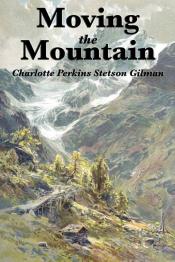
Moving the Mountain by Charlotte Perkins Gilman (1911)
Image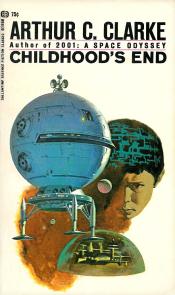
Childhood's End by Arthur C. Clarke (1953)
The Overlords appeared suddenly over every city—intellectually, technologically, and militarily superior to humankind. Benevolent, they made few demands: unify earth, eliminate poverty, and end war. With little rebellion, humankind agreed, and a golden age began.
But at what cost? With the advent of peace, man ceases to strive for creative greatness, and a malaise settles over the human race. To those who resist, it becomes evident that the Overlords have an agenda of their own. As civilization approaches the crossroads, will the Overlords spell the end for humankind . . . or the beginning?
Image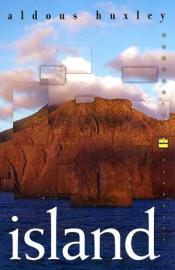
Island by Aldous Huxley (1962)
In Island, his last novel, Huxley transports us to a Pacific island where, for 120 years, an ideal society has flourished. Inevitably, this island of bliss attracts the envy and enmity of the surrounding world. A conspiracy is underway to take over Pala, and events begin to move when an agent of the conspirators, a newspaperman named Faranby, is shipwrecked there. What Faranby doesn't expect is how his time with the people of Pala will revolutionize all his values and—to his amazement—give him hope.Image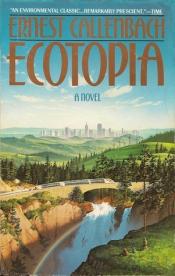
Ecotopia by Ernest Callenbach (1975)
A novel both timely and prophetic, Ernest Callenbach’s Ecotopia is a hopeful antidote to the environmental concerns of today, set in an ecologically sound future society.
Ecotopia was founded when northern California, Oregon, and Washington seceded from the Union to create a “stable-state” ecosystem: the perfect balance between human beings and the environment. Now, twenty years later, this isolated, mysterious nation is welcoming its first officially sanctioned American visitor: New York Times-Post reporter Will Weston.
Skeptical yet curious about this green new world, Weston is determined to report his findings objectively. But from the start, he’s alternately impressed and unsettled by the laws governing Ecotopia’s earth-friendly agenda: energy-efficient “mini-cities” to eliminate urban sprawl, zero-tolerance pollution control, tree worship, ritual war games, and a woman-dominated government that has instituted such peaceful revolutions as the twenty-hour workweek and employee ownership of farms and businesses. His old beliefs challenged, his cynicism replaced by hope, Weston meets a sexually forthright Ecotopian woman and undertakes a relationship whose intensity will lead him to a critical choice between two worlds.
Image
Consider Phlebas (The Culture Series #1) by Iain M. Banks (1987)
The war raged across the galaxy. Billions had died, billions more were doomed. Moons, planets, the very stars themselves, faced destruction, cold-blooded, brutal, and worse, random. The Idirans fought for their Faith; the Culture for its moral right to exist. Principles were at stake. There could be no surrender.
Within the cosmic conflict, an individual crusade. Deep within a fabled labyrinth on a barren world, a Planet of the Dead proscribed to mortals, lay a fugitive Mind. Both the Culture and the Idirans sought it. It was the fate of Horza, the Changer, and his motley crew of unpredictable mercenaries, human and machine, actually to find it, and with it their own destruction.
Image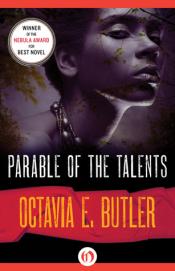
Parable of the Talents by Octavia Butler (1998)
This Nebula Award-winning sequel to Parable of the Sower continues the story of Lauren Olamina in socially and economically depressed California in the 2030s. Convinced that her community should colonize the stars, Lauren and her followers make preparations. But the collapse of society and rise of fanatics result in Lauren's followers being enslaved, and her daughter stolen from her. Now, Lauren must fight back to save the new world order.Image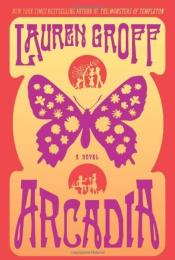
Arcadia by Lauren Groff (2012)
In the fields and forests of western New York State in the late 1960s, several dozen idealists set out to live off the land, founding what becomes a famous commune centered on the grounds of a decaying mansion called Arcadia House.
Arcadia follows this lyrical, rollicking, tragic, and exquisite utopian dream from its hopeful start through its heyday and after. The story is told from the point of view of Bit, a fascinating character and the first child born in Arcadia.Image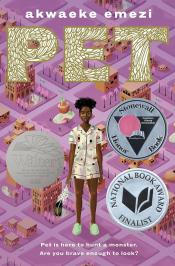
A thought-provoking and haunting novel about a creature that escapes from an artist's canvas, whose talent is sniffing out monsters in a world that claims they don't exist anymore. Perfect for fans of Akata Witch and Shadowshaper.
There are no monsters anymore, or so the children in the city of Lucille are taught. Jam and her best friend, Redemption, have grown up with this lesson all their life. But when Jam meets Pet, a creature made of horns and colors and claws, who emerges from one of her mother's paintings and a drop of Jam's blood, she must reconsider what she's been told. Pet has come to hunt a monster--and the shadow of something grim lurks in Redemption's house. Jam must fight not only to protect her best friend, but also uncover the truth, and the answer to the question How do you save the world from monsters if no one will admit they exist?
In their riveting and timely young adult debut, acclaimed novelist Akwaeke Emezi asks difficult questions about what choices you can make when the society around you is in denial.
Image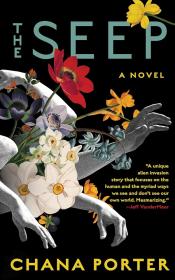
The Seep by Chana Porter (2020)
Trina Goldberg-Oneka is a trans woman whose life is irreversibly altered in the wake of a gentle—but nonetheless world-changing—invasion by an alien entity calling itself The Seep. Through The Seep, everything is connected. Capitalism falls, hierarchies and barriers are broken down; if something can be imagined, it is possible.
Trina and her wife, Deeba, live blissfully under The Seep’s utopian influence—until Deeba begins to imagine what it might be like to be reborn as a baby, which will give her the chance at an even better life. Using Seep-tech to make this dream a reality, Deeba moves on to a new existence, leaving Trina devastated.
Heartbroken and deep into an alcoholic binge, Trina chases after a young boy she encounters, embarking on an unexpected quest. In her attempt to save him from The Seep, she will confront not only one of its most avid devotees, but the terrifying void that Deeba has left behind.
Image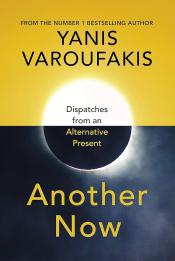
Another Now: Dispatches from an Alternative Present by Yanis Varoufakis (2020)
What would a fair and equal society actually look like? The world-renowned economist and bestselling author Yanis Varoufakis presents his radical and subversive answer.
Imagine it is 2025. Years earlier, in the wake of the financial crisis of 2008, a global hi-tech uprising has birthed a post-capitalist world in which work, money, land, digital networks and politics have been truly democratised.
In a thought-experiment of startling originality, world-famous economist Yanis Varoufakis offers a glimpse of this alternative reality. Through the eyes of three characters - a libertarian ex-banker, a Marxist-feminist and a maverick technologist - we see the genesis of a world without commercial banks or stock markets, where companies are owned equally by all staff, basic income is guaranteed, global imbalances and climate change cancel each other out, and housing is socialised.
Is a liberal socialism feasible? Can prosperity grow without costing the Earth? Are we able to build the good society, despite our flaws?
As radical in its form as in its vision, Another Now blends Platonic dialogue with speculative fiction to show that there is an alternative to capitalism, while also confronting us with the greatest question: how far are we willing to go to bring it about?
Image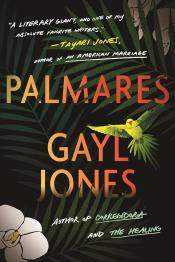
First discovered and edited by Toni Morrison, Gayl Jones has been described as one of the great literary writers of the 20th century. Now, for the first time in over 20 years, Jones is ready to publish again. Palmares is the first of five new works by Gayl Jones to be published in the next two years, rewarding longtime fans and bringing her talent to a new generation of readers.
Intricate and compelling, Palmares recounts the journey of Almeyda, a Black slave girl who comes of age on Portuguese plantations and escapes to a fugitive slave settlement called Palmares. Following its destruction, Almeyda embarks on a journey across colonial Brazil to find her husband, lost in battle.
Her story brings to life a world impacted by greed, conquest, and colonial desire. She encounters a mad lexicographer, desperate to avoid military service; a village that praises a god living in a nearby cave; and a medicine woman who offers great magic, at a greater price.
Combining the author’s mastery of language and voice with her unique brand of mythology and magical realism, Jones reimagines the historical novel. The result is a sweeping saga spanning a quarter century, with vibrant settings and unforgettable characters, steeped in the rich oral tradition of its world. Of Gayl Jones, the New Yorker noted, “[Her] great achievement is to reckon with both history and interiority, and to collapse the boundary between them.” Like nothing else before it, Palmares embodies this gift.
Image
The Men by Sandra Newman (2022)
Deep in the California woods on an evening in late August, Jane Pearson is camping with her husband Leo and their five-year-old son Benjamin. As dusk sets in, she drifts softly to sleep in a hammock strung outside the tent where Leo and Benjamin are preparing for bed. At that moment, every single person with a Y chromosome vanishes around the world, disappearing from operating theaters mid-surgery, from behind the wheels of cars, from arguments and acts of love. Children, adults, even fetuses are gone in an instant. Leo and Benjamin are gone. No one knows why, how, or where.
After the Disappearance, Jane forces herself to enter a world she barely recognizes, one where women must create new ways of living while coping with devastating grief. As people come together to rebuild depopulated industries and distribute scarce resources, Jane focuses on reuniting with an old college girlfriend, Evangelyne Moreau, leader of the Commensalist Party of America, a rising political force in this new world. Meanwhile, strange video footage called “The Men” is being broadcast online showing images of the vanished men marching through barren, otherworldly landscapes. Is this just a hoax, or could it hold the key to the Disappearance?
From the author of The Heavens, The Men is a gripping, beautiful, and disquieting novel of feminist utopias and impossible sacrifices that interrogates the dream of a perfect society and the conflict between individual desire and the good of the community.
Image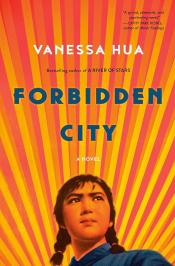
Forbidden City by Vanessa Hua (2022)
A teenage girl living in 1960s China becomes Mao Zedong's protégée and lover--and a poster child for the Cultural Revolution--in this provocative, poignant novel from the bestselling author of A River of Stars.
On the eve of China's Cultural Revolution and her sixteenth birthday, Mei dreams of becoming a model revolutionary. When the Communist Party recruits girls for a mysterious duty in the capital, she seizes the opportunity to escape her impoverished village. It is only when Mei arrives at the Chairman’s opulent residence—a forbidden city unto itself—that she learns that the girls’ job is to dance with the Party elites. Ambitious and whip-smart, Mei makes a beeline toward the Chairman.
Mei gradually separates from the other recruits to become the Chairman’s confidante—and paramour. As he fends off political rivals, Mei faces down schemers from the dance troupe who will stop at nothing to take her place, as well as the Chairman’s imperious wife, who has schemes of her own. When the Chairman finally gives Mei a political mission, she seizes it with fervor, but the brutality of this latest stage of the revolution makes her begin to doubt all the certainties she has held so dear.
Forbidden City is an epic yet intimate portrayal of one of the world's most powerful and least understood leaders during the most turbulent period of modern Chinese history. Mei's harrowing journey toward truth and disillusionment raises questions about power, manipulation, and belief, as seen through the eyes of a passionate teenage girl.
Image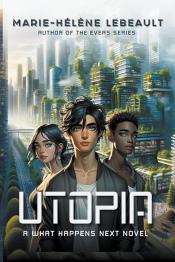
Utopia by Marie-Helene Lebeault (2024)
Three extraordinary teenagers, each an outcast in their worlds, unite to reshape the destiny of a utopian society. Ryn, who couldn't adapt to life under the sea, Eira, born above the clouds but unable to breathe the thin air, and Aiden, rejected by the subterranean civilization, embarks on a thrilling journey to Vancouver's utopia. They'll challenge the elders, confront hidden truths, and discover the power of unity in a fast-paced young adult sci-fi adventure that explores the boundaries of human resilience, and the promise of a better world.
Utopia is a What Happens Next? novel developed from the Under the Ice short story.
Image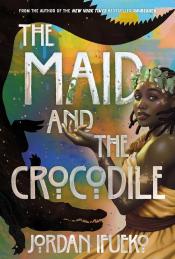
The Maid and the Crocodile by Jordan Ifueko (2024)
The smallest spark can bind two hearts . . . or start a revolution.
In the magic-soaked capital city of Oluwan, country bumpkin Small Sade needs a job—preferably as a maid, with employers who don’t mind her unique appearance and unlucky foot. But before she can be hired, she accidentally binds herself to a powerful god known only as the Crocodile, who is rumored to devour pretty girls. Small Sade entrances the Crocodile with her secret: she is a Curse Eater, gifted with the ability to alter people’s fates by cleaning their houses.
The handsome god warns that their fates are bound, but Small Sade evades him, launching herself into a new career as the Curse Eater of a swanky inn. She is determined to impress the wealthy inhabitants and earn her place in Oluwan City . . . assuming her secret-filled past—and the revolutionary ambitions of the Crocodile God—don’t catch up with her.
But maybe there is more to Small Sade. And maybe everyone in Oluwan City deserves more, too, from the maids all the way to the Anointed Ones.
Fans of the Raybearer series, Howl's Moving Castle, and Beauty and the Beast will enjoy The Maid and the Crocodile–no prior knowledge of the Raybearer series necessary.
- "Utopia" as Seen on Screen
- Image
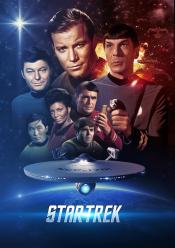
Set in the distant future, the United Federation of Planets is a utopian intergalactic republic composed of many planetary governments. The television series and movies focus on the exploration and adventures of members of Starfleet—the exploration, diplomacy, research, and defense service of the Federation.
Image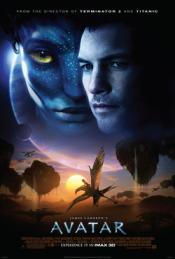
A paraplegic Marine dispatched to the moon Pandora on a unique mission becomes torn between following his orders and protecting the world he feels is his home. Pandora is a beautiful and dangerous moon bursting with life. The residents, tall blue humanoid people, live in an utopian-like harmony with their home and its creatures with respect to the dangers that exist alongside them.
Image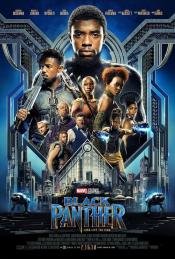
T'Challa, heir to the hidden but advanced kingdom of Wakanda, must step forward to lead his people into a new future and must confront a challenger from his country's past. In the Marvel universe, Wakanda is an independent African nation known for its advanced technology and rich vibranium mineral deposits.
Image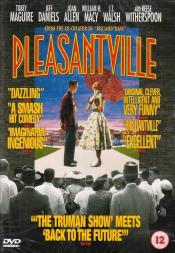
Two 1990s teenage siblings find themselves transported to a 1950s sitcom where their influence begins to profoundly change that colorless, complacent world. Pleasantville is a surface-level, false utopia of black-and-white TV sitcom characters who live in ignorance of anything outside their slice of fictional 1950s suburban America.
Image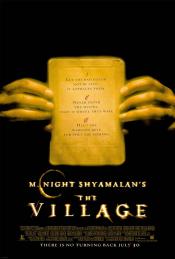
Members of an isolated 19th-century community fear the strange creatures that inhabit the surrounding forest. This small village remains isolated from the wicked towns outside the surrounding forest, and only risks trips to the wider world in cases of extreme need, such as fetching medicines for illnesses. The village is meant to be a safe place, as long as the community rules are followed.
Image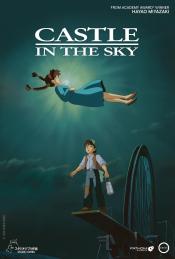
Pazu's life changes when he meets Sheeta, a girl whom pirates are chasing for her crystal amulet, which has the potential to locate Laputa, a legendary castle floating in the sky. Laputa was once the heart of an advanced civilization with access to a giant and powerful crystal.
Image
A young and parentless girl adopts a 'dog' from the local pound, completely unaware that it's supposedly a dangerous scientific experiment that's taken refuge on Earth and is now hiding from its creator and those who see it as a menace. The Hawaiian concept of ohana plays a major role in the film. Despite setbacks and intrusion from multiple outside forces that would break apart their family, the characters end up in one, big supportive found family.
Image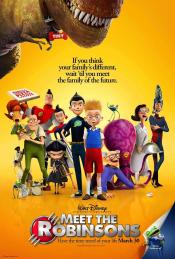
Lewis is a brilliant inventor who meets mysterious stranger named Wilbur Robinson, whisking Lewis away in a time machine and together they team up to track down Bowler Hat Guy in a showdown that ends with an unexpected twist of fate. The future Wilbur takes Lewis to is an inventor's paradise where mistakes are seen as steps toward progress.
Image
The legendary Clades are a family of explorers whose differences threaten to topple their latest and most crucial mission. Ultimately a film about preserving their home, the land of Avalonia, where they are capable of living in ways good for themselves and their environment.
Still looking for your Utopia?
Despite failed experiments of the past and the questionable utopias of fiction, many people still find the idea of utopia worth attempting. For some, utopia is found through environmentalism—being better stewards of our natural world and resources. For others, utopia is a place of abundance where there are very real solutions to filling the needs of all people. The world doesn't have to be a perfect place, but people can find their people and passions without isolating themselves.
Take a look at some non-fiction from our collection that explores the concepts of utopia and ways to find peace, happiness, and fulfillment in your own life.
- Reaching for Utopia: Past, Present, and Theoretical Future
- Image
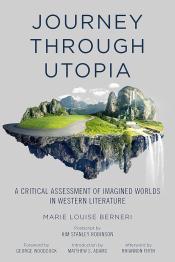
Journey through Utopia is a richly detailed and critically compelling examination of utopian literature, beginning with Plato’s Republic and continuing through to Huxley’s Brave New World. Utopias have been penned with diverse intentions: some as pictures of an ideal society, some as blueprints for action, some, especially in times of severe censorship, as covert criticisms of existing conditions. Marie Louise Berneri exposes the dark shadow that lingers above most utopian works by emphasizing the intolerant and authoritarian nature of these visions, warning of the doom that awaits those foolish enough to put their trust in an ordered and regimented world. Journey through Utopia is a necessary companion, and in many cases an antidote, to imagined fictions from antiquity to the present.
Image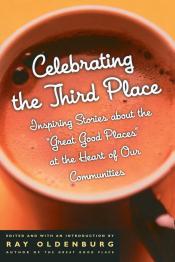 Image
Image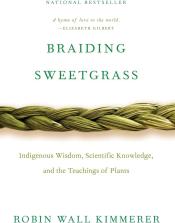 As a botanist, Robin Wall Kimmerer has been trained to ask questions of nature with the tools of science. As a member of the Citizen Potawatomi Nation, she embraces the notion that plants and animals are our oldest teachers. In Braiding Sweetgrass, Kimmerer brings these lenses of knowledge together to show that the awakening of a wider ecological consciousness requires the acknowledgment and celebration of our reciprocal relationship with the rest of the living world. For only when we can hear the languages of other beings are we capable of understanding the generosity of the earth, and learning to give our own gifts in return.Image
As a botanist, Robin Wall Kimmerer has been trained to ask questions of nature with the tools of science. As a member of the Citizen Potawatomi Nation, she embraces the notion that plants and animals are our oldest teachers. In Braiding Sweetgrass, Kimmerer brings these lenses of knowledge together to show that the awakening of a wider ecological consciousness requires the acknowledgment and celebration of our reciprocal relationship with the rest of the living world. For only when we can hear the languages of other beings are we capable of understanding the generosity of the earth, and learning to give our own gifts in return.Image
Utopia for Realists: How We Can Build the Ideal World by Rutger Bregman (2014)
Universal basic income. A 15-hour workweek. Open borders. Does it sound too good to be true? One of Europe's leading young thinkers shows how we can build an ideal world today.
After working all day at jobs we often dislike, we buy things we don't need. Rutger Bregman, a Dutch historian, reminds us it needn't be this way—and in some places it isn't. Rutger Bregman's TED Talk about universal basic income seemed impossibly radical when he delivered it in 2014. A quarter of a million views later, the subject of that video is being seriously considered by leading economists and government leaders the world over. It's just one of the many utopian ideas that Bregman proves is possible today.
Utopia for Realists is one of those rare books that takes you by surprise and challenges what you think can happen. From a Canadian city that once completely eradicated poverty, to Richard Nixon's near implementation of a basic income for millions of Americans, Bregman takes us on a journey through history, and beyond the traditional left-right divides, as he champions ideas whose time have come.
Every progressive milestone of civilization—from the end of slavery to the beginning of democracy—was once considered a utopian fantasy. Bregman's book, both challenging and bracing, demonstrates that new utopian ideas, like the elimination of poverty and the creation of the fifteen-hour workweek, can become a reality in our lifetime. Being unrealistic and unreasonable can in fact make the impossible inevitable, and it is the only way to build the ideal world.
Image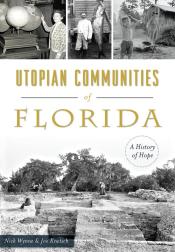
Utopian Communities of Florida: A History of Hope by Nick Wynne and Joe Knetsch (2016)
Florida has long been viewed as a land of hope and endless possibilities. Visionaries seeking to establish new communities where they could escape the influences of society at large have turned to Florida to construct their utopias--from the vast plantations of British philanthropists and entrepreneurs in the eighteenth century to the more exotic Koreshan Unity and its theory that humans live in the center of a Hollow Earth. Some came to the Sunshine State seeking religious freedom, such as the settlers in Moses Levy's Jewish colony, while others settled in Florida to establish alternative lifestyles, like the spiritualists of Cassadaga. Still others created their communities to practice new agricultural techniques or political philosophies. Historians Joe Knetsch and Nick Wynne examine a number of these distinctive utopian communities and how they have contributed to Florida's unique social fabric.
Image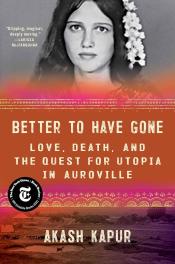
Better to Have Gone: Love, Death, and the Quest for Utopia in Auroville by Akash Kapur (2021)
It’s the late 1960s, and two lovers converge on an arid patch of earth in South India. John Walker is the handsome scion of a powerful East Coast American family. Diane Maes is a beautiful hippie from Belgium. They have come to build a new world—Auroville, an international utopian community for thousands of people. Their faith is strong, the future bright.
So how do John and Diane end up dying two decades later, on the same day, on a cracked concrete floor in a thatch hut by a remote canyon? This is the mystery Akash Kapur sets out to solve in Better to Have Gone , and it carries deep personal Diane and John were the parents of Akash’s wife, Auralice. Akash and Auralice grew up in Auroville; like the rest of their community, they never really understood those deaths.
In 2004, Akash and Auralice return to Auroville from New York, where they have been living with John’s family. As they reestablish themselves in the community, along with their two sons, they must confront the ghosts of those distant deaths. Slowly, they come to understand how the tragic individual fates of John and Diane intersected with the collective history of their town.
Image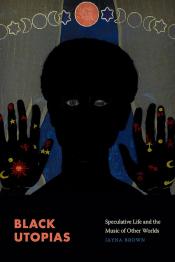
Black Utopias: Speculative Life and the Music of Other Worlds by Jayna Brown (2021)
In Black Utopias Jayna Brown takes up the concept of utopia as a way of exploring alternative states of being, doing, and imagining in Black culture. Musical, literary, and mystic practices become utopian enclaves in which Black people engage in modes of creative worldmaking. Brown explores the lives and work of Black women mystics Sojourner Truth and Rebecca Cox Jackson, musicians Alice Coltrane and Sun Ra, and the work of speculative fiction writers Samuel Delany and Octavia Butler as they decenter and destabilize the human, radically refusing liberal humanist ideas of subjectivity and species. Brown demonstrates that engaging in utopian practices Black subjects imagine and manifest new genres of existence and forms of collectivity. For Brown, utopia consists of those moments in the here and now when those excluded from the category human jump into other onto-epistemological realms. Black people—untethered from the hope of rights, recognition, or redress—celebrate themselves as elements in a cosmic effluvium.
Image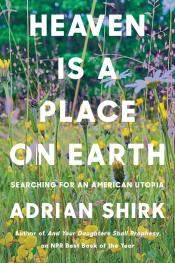
Heaven is a Place on Earth by Adrian Shirk (2022)
An exploration of American ideas of utopia through the lens of one millennial's quest to live a more communal life under late-stage capitalism.
Told in a series of essays that balance memoir with fieldwork, Heaven Is a Place on Earth is an idiosyncratic study of American utopian experiments—from the Shakers to the radical faerie communes of Short Mountain to the Bronx rebuilding movement—through the lens of one millennial’s quest to create a more communal life in a time of unending economic and social precarity.
When Adrian Shirk's father-in-law has a stroke and loses his ability to speak and walk, she and her husband—both adjuncts in their midtwenties—become his primary caretakers. The stress of daily caretaking, navigating America’s broken health care system, and ordinary twenty-first-century financial insecurity propels Shirk into an odyssey of American utopian experiments in the hopes that they might offer a way forward.
Along the way, Shirk seeks solace in her own community of friends, artists, and theologians. They try to imagine a different kind of life, examining what might be replicable within the histories of utopia-making, and what might be doomed. Rather than "no place," Shirk reframes utopia as something that, according to the laws of capital and conquest, shouldn't be able to exist—but does anyway, if only for a moment.
Image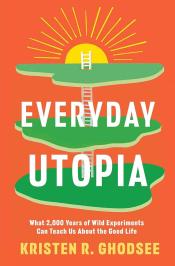
A dazzling tour through 2,000 years of audacious utopian thinking and experiments, exploring better ways to arrange our daily lives, plus a globetrotting jaunt to the communities already putting these seemingly fanciful visions into practice today.
In the 6th century BCE, the Greek philosopher Pythagoras—a man remembered today more for his theorem about right-angled triangles than for his progressive politics—founded a commune in a seaside village in what’s now southern Italy. The men and women there shared their property, lived as equals, and dedicated themselves to the study of mathematics and the mysteries of the universe.
Ever since, humans have been dreaming up better ways to organize how we live together, share our property, raise our children, and determine who’s part of our families. Some of these experiments burned brightly for only a brief while—but others carry on today.
In Everyday Utopia, fascinatingly feminist thinker Kristen R. Ghodsee whisks you away on a tour through history and around the world to explore those places that have boldly dared to reimagine how we might live our daily lives: from the Danish cohousing communities that share chores and deepen neighborly bonds to matriarchal Colombian ecovillages where residents grow all their own food; and from Connecticut, where new laws make it easier for extra “alloparents” to help raise children not their own, to China, where planned microdistricts ensure everything a busy household might need is nearby.
One of those startlingly rare books that upends what you think is possible, Everyday Utopia offers a radically hopeful vision for how to build more contented and connected societies, alongside a practical guide to what we all can do in the meantime to live the good life each and every day.
Image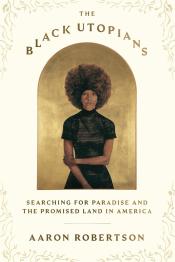
A lyrical meditation on how Black Americans have envisioned utopia—and sought to transform their lives.
How do the disillusioned, the forgotten, and the persecuted not merely hold on to life but expand its possibilities and preserve its beauty? What, in other words, does utopia look like in black? These questions animate Aaron Robertson’s exploration of Black Americans' efforts to remake the conditions of their lives.
Writing in the tradition of Saidiya Hartman and Ta-Nehisi Coates, Robertson makes his way from his ancestral hometown of Promise Land, Tennessee, to Detroit—the city where he was born, and where one of the country’s most remarkable Black utopian experiments got its start. Founded by the brilliant preacher Albert Cleage Jr., the Shrine of the Black Madonna combined Afrocentric Christian practice with radical social projects to transform the self-conception of its members.
Central to this effort was the shrine’s chancel mural of a Black Virgin and child, the icon of a nationwide liberation movement that would come to be known as Black Christian Nationalism. The Shrine’s members opened bookstores and co-ops, created a self-defense force, and raised their children communally, eventually working to establish the country’s largest Black-owned farm, where the effort to create an earthly paradise for Black people continues today.
The Black Utopians is the story of a movement and of a world still in the making—one that points the way toward radical alternatives for the future.
Image
Abundance by Ezra Klein (2025)
To trace the global history of the twenty-first century so far is to trace a history of growing unaffordability and shortage. After years of refusing to build sufficient housing, the entire country has a national housing crisis. After years of slashing immigration, we don’t have enough workers. After decades of off-shoring manufacturing, we have a shortage of chips for cars and computers. Despite decades of being warned about the consequences of climate change, we haven’t built anything close to the clean energy infrastructure we need. The crisis that’s clicking into focus now has been building for decades—because we haven’t been building enough.
Abundance explains that our problems today are not the results of yesteryear’s villains. Rather, one generation’s solutions have become the next generation’s problems. Rules and regulations designed to solve the environmental problems of the 1970s often prevent urban density and green energy projects that would help solve the environmental problems of the 2020s. Laws meant to ensure that government considers the consequences of its actions in matters of education and healthcare have made it too difficult for government to act consequentially. In the last few decades, our capacity to see problems has sharpened while our ability to solve them has diminished.
Progress requires the ability to see promise rather than just peril in the creation of new ideas and projects, and an instinct to design systems and institutions that make building possible. In a book exploring how can move from a liberalism that not only protects and preserves but also builds, Klein and Thompson trace the political, economic, and cultural barriers to progress and how we can adopt a mindset directed toward abundance, and not scarcity, to overcome them.
- Utopia as Self-Care
- Image

Communion: The Female Search for Love by bell hooks (2002)
Image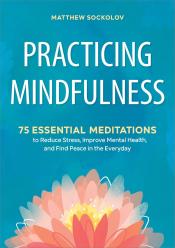
Calm the mind and find peace with these simple mindfulness meditations
Mindfulness is an evidence-based method for reducing stress, enhancing resilience, and maintaining mental well-being. Even short meditations can turn a bad day around, ground us in the present moment, and help us approach life with gratitude and kindness.
Practicing Mindfulness was created by the founder of One Mind Dharma. He developed these 75 essential exercises to offer practical guidance for anyone who wants to realize the benefits of mindful meditation. This includes expert advice on dealing with distorted or wandering thoughts and how to handle mental blocks.
Early meditations in Practicing Mindfulness take just 5 minutes and are highly accessible. As they progress, exercises grow with the reader, building on previous lessons to develop a transformative mindfulness practice. With meditations designed for specific situations or emotions, even experienced practitioners will have a continuing resource for mindfulness at every moment.
Begin a journey of peace and patience today on the path to a calmer, more balanced life with Practicing Mindfulness.
Image
In the spirit of You Are a Badass and The Life-Changing Magic of Not Giving a F*ck, a helpful and humorous guide to shedding our anxious habits and building a more solid sense of self in our increasingly anxiety-inducing world.
Licensed therapist and mental health writer Dr. Kathleen Smith offers a smart, practical antidote to our anxiety-ridden times. Everything Isn't Terrible is an informative and practical guide -- featuring a healthy dose of humor -- for people who want to become beacons of calmness in their families, at work, and in our anxious world. Everything Isn't Terrible will inspire you to confront your anxious self, take charge of your anxiety, and increase your own capacity to choose how you respond to it. Comprised of short chapters containing anecdotal examples from Smith's work with her clients, in addition to engaging, actionable exercises for readers, Everything Isn't Terrible will give anyone suffering from anxiety all the tools they need to finally...calm...down.
Ultimately, living a calmer, less anxious life -- one that isn't terrible -- is possible, and with this book you'll learn how to do it.
Image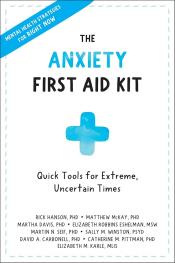
If you’re feeling unprecedented levels of stress and anxiety right now, please know that you aren’t alone. In these extreme and uncertain times, it’s natural to be in a constant state of mental and physical strain. Whether you’re dealing with job loss, a sick loved one, or just feeling the weight of the world during your 2 a.m. doomscroll—you need quick tools you can use right now, whenever and wherever you are, to lower stress and soothe anxiety. This emergency kit has you covered.
Written by a dream team of mental health experts and grounded in evidence-based therapy, The Anxiety First Aid Kit offers powerful tools for triaging stress and anxiety in the moments when you need it most. You’ll find easy and doable ways to help you press pause on panic, and find your calm spot right away. You’ll discover in-the-moment interventions to help you relax before your anxiety and stress go into overdrive. And finally, you’ll learn how to make healthy and workable lifestyle changes to improve your mental health and increase resilience, so you can effectively deal with stressful situations in the future—no matter what life throws at you.
Between pandemic-related economic fears, the frustrations of social distancing, indoor confinement, work and household double duties (now including homeschooling!), and the looming threat of serious illness, is it any wonder you’re feeling completely stressed out and anxious? If you need immediate relief, The Anxiety First Aid Kit has everything you need to manage stress and anxiety—right now.
Image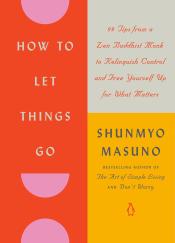
Feeling overwhelmed? Step away from life's demands and free yourself up for what matters with this succinct and sensible guide by the Zen Buddhist author of the international bestsellers The Art of Simple Living and Don't Worry.
Amid the relentless cycle of news, social media, emails, and texts, it can be hard to know when, if ever, you can take a break from everything clamoring for your attention. The internationally bestselling Buddhist monk Shunmyo Masuno offers a radical You can leave it all be, and, indeed, sometimes the best thing you can learn is how to do nothing. How to Let Things Go will teach you to:
Lesson #2: Give people space—being caring and being nosy are not the same thing.
Lesson #15: Remember that social media is a tool and nothing more.
Lesson #19: Let a relationship come to an end rather than force it.
Lesson #40: Think of letting things go not as throwing them away, but setting them free.
Lesson #75: Make decisions in the light of the morning—don't rush into them.
Lesson #90: Slow down and take more breaks.
With these and ninety-three other practical tips, you can abandon the futile pursuit of controlling everything in your life and discover the key to a fulfilling social life, individual well-being, and a calmer, more focused mind.
Image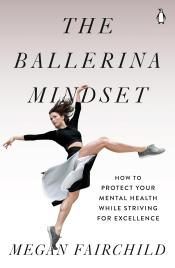
Learn how to thrive in intense, competitive environments with these secrets from one of America's premiere ballerinas--and get a sneak peek at what her life is really like.
Ballet may look glamorous and effortless to audience members, but it requires grueling discipline. It's a competitive and physically and mentally demanding career that combines elite athleticism, artistry, and performance. Not only do dancers rehearse for six to eight hours a day before performing at night, but they also must make it all look easy!
As a principal ballerina with New York City Ballet and a one-time Broadway star--not to mention a mother of three and an MBA student--Megan Fairchild is all too familiar with these challenges. In The Ballerina Mindset , she shares all the wisdom she's learned from her nearly two-decade career, drawing upon her own experiences to show us how she learned to overcome challenges ranging from stage fright to negative feedback to a packed calendar to weight management--and how we can do the same. Inspiring, warm, and revelatory, The Ballerina Mindset is the perfect how-to guide for dancers, athletes, artists, and anyone struggling to stay sane in a high-pressure environment.
Image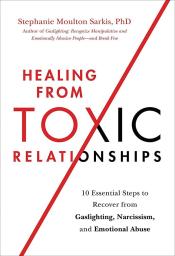
From the psychologist and author of Gaslighting comes a practical recovery plan outlining ten foundational steps to true healing.
Surviving and escaping a toxic or abusive relationship can often only be part of the struggle. Long after, survivors often struggle to heal; your self‑esteem may be damaged, you may feel rage and betrayal, and you may punish and/or blame yourself. The author of Gaslighting and specialist in toxic behavior, narcissistic abuse, and personality disorders, Dr. Stephanie Sarkis has seen it all—and she is here to help you understand how to move forward. In Healing from Toxic Relationships, Dr. Sarkis extends compassion and knowledge to survivors, helping you understand the underpinnings of toxic behavior and how to find peace.
Highlighting ten essential steps, Dr. Sarkis provides survivors with an accessible framework that can be applied to anyone preparing to heal:
1. Block or Limit Contact;
2. Create Your Own Closure;
3. Forgive Yourself;
4. Establish Boundaries;
5. Talk to a Professional;
6. Practice Self‑Care;
7. Reconnect;
8. Grieve;
9. Look Outward;
10. Prevent: Keeping Toxic People Away.
Anyone who is in a toxic relationship—whether it's with a romantic partner, colleague, family member, or friend—deserves a way out and a path forward. Dr. Sarkis offers help and hope.
Image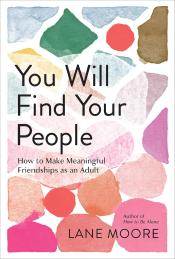
You Will Find Your People: How to Make Meaningful Friendships as an Adult by Lane Moore (2023)
From Lane Moore, the critically acclaimed author of How to Be Alone, comes a searingly intimate, yet wildly funny exploration of the frustrating, messy, and, at times, deeply joyful experience of learning how to make meaningful friendships as an adult.
Part memoir, part self-help, You Will Find Your People uncovers the complex, frightening, and often vulnerable process of building real, healthy friendships and finally creating your chosen family. Moore takes readers on a journey that examines and challenges the ideas of friendship we’ve seen in pop culture, answers every question you’ve ever had about friend breakups, and teaches us how to fearlessly ask for what we want in friendships once and for all.
Full of Moore’s hilarious personal anecdotes, advice on how to identify your attachment style, and real tools to create better communication and boundaries, this book is your personal guide on how to heal from your past friendships, improve your current ones, and finally have the friendships we know we deserve.
Image
Project Unlonely: Healing Our Crisis of Disconnection by Jeremy Nobel (2023)
Insight into our new world of loneliness that offers solace, hope, and solutions.
Even before 2020, chronic loneliness was a private experience of profound anguish that had become a public health crisis. Since then it has reached new heights. Loneliness assumes many forms, from enduring physical isolation to feeling rejected because of difference, and it can have devastating consequences for our physical and mental health. As the founder of Project UnLonely, Jeremy Nobel unpacks our personal and national experiences of loneliness to discover its roots and to show how we can take steps to find comfort and connection.
Dr. Nobel brings together many voices, from pioneering researchers, to leaders in business, education, the arts, and healthcare, to lonely people of every age, background, and circumstance. He discovers that the pandemic isolated us in ways that were not only physical, and that, at its core, a true sense of loneliness results from a disconnection to the self. He clarifies how meaningful reconnection can be nourished and sustained. And he reveals that an important component of the healing process is engaging in creativity, a powerful opportunity he shows us can be accessed by all.
Supportive and clear-eyed, this is the book we will take into our new normal and rely on for years to come.
Image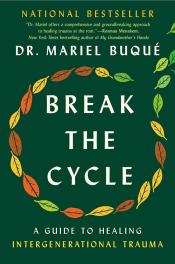
Break the Cycle: A Guide to Healing Intergenerational Trauma by Mariel Buqué (2023)
The definitive, paradigm-shifting guide to healing intergenerational trauma—weaving together scientific research with practical exercises and stories from the therapy room—from Dr. Mariel Buqué, PhD, a Columbia University–trained trauma-informed psychologist and practitioner of holistic healing
From Dr. Mariel Buqué, a leading trauma psychologist, comes this groundbreaking guide to transforming intergenerational pain into intergenerational abundance. With Break the Cycle , she delivers the definitive guide to healing inherited trauma. Weaving together scientific research with practical exercises and stories from the therapy room, Dr. Buqué teaches readers how trauma is transmitted from one generation to the next and how they can break the cycle through tangible therapeutic practices, learning to pass down strength instead of pain to future generations.
When a physical wound is left unhealed, it continues to cause pain and can infect the whole body. When emotions are left unhealed, they similarly cause harm that spreads to other parts of our lives, hurting our family, friends, community members, and others. Eventually, this hurt can injure an entire lineage, metastasizing across years and generations. This is intergenerational trauma.
This trauma is why some of us become estranged from our families, why some of us are people pleasers, why some of us find ourselves in codependent relationships. This trauma can be rooted in the experiences of ancestors, who may have suffered due to unhealthy family dynamics, and it can be collective, the result of a shared experience like systemic oppression, or harmful ingrained behaviors in a culture like the acceptance of physical discipline of children, or even a natural disaster like a pandemic. These wounds are complex, impacting our minds, bodies, and spirits. Healing requires a holistic approach that has so far been absent from the field of psychology. Until now.
Image
Finding Your Third Place: Building Happier Communities by Richard Kyte (2024)